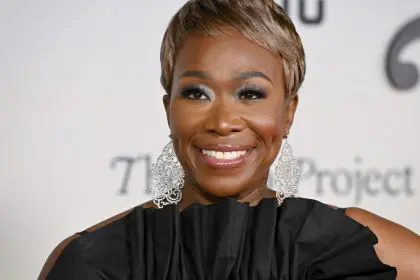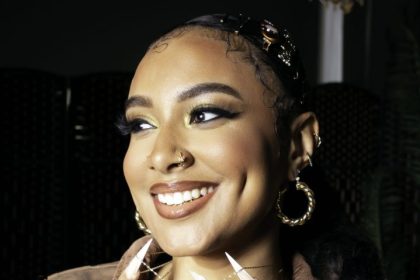
Sound and Color, the latest album from blues rock darlings Alabama Shakes, was released in April to wide critical acclaim and commercial success. The album became the band’s first to go number one, and is just the latest in a string of successes for the quintet which formed in 2009. Center stage for the Shakes is their charismatic lead singer, 26-year-old Brittany Howard. A critically acclaimed rock band fronted by a Black woman is big news in the 2000s; with rock bands pop culture visibility at a relative low and the constant disassociation of “Black” and “rock,” but with Howard getting so much deserved recognition, and since June is Black Music Month, it’s as good a time as any to remind music fans that Black women have long been a part of rock ‘n’ roll’s storied history.
Most music fans should know that rock ‘n’ roll began as Black music. What is generally less recognized is the role Black artists played in the continuing evolution of the art form over the next five decades. Beyond household names like Chuck Berry, Jimi Hendrix and Prince, there have been a host of brilliant artists pushing the genre forward — and the most unheralded tend to be the Black women.
Gospel singer Sis. Rosetta Tharpe was a pioneer of the lead guitar playing style who would perform bluesy licks while singing gospel songs of praise; she provided a template for the approach countless blues and rock guitarists would use for the next 70 years. She helped gospel crossover to secular audiences and her rhythmic songs are the bedrock on which later artists like Little Richard and Fats Domino built rock ‘n’ roll. In the 1950s, singers like Lavern Baker and Big Mama Thornton hit the charts with bluesy vocals accompanied by rocking instrumentation, and Thornton’s throaty vocals were a building block for everyone from Janis Joplin to Joan Jett.
As the 60s dawned, a new rough and ready vocalist exploded onto popular music with “A Fool In Love,” the debut single from Ike and Tina Turner. Rock music owes a tremendous debt to Tina Turner, whose raw, unrestrained singing was groundbreaking for pop audiences; and whose sexy and energetic image signaled a seismic shift in the way women presented themselves to an audience. Most popular female recording artists before her were coy and demure — but Tina was aggressive, both in her singing and her stage performance. She was the announcement of a new kind of Black female star. Unlike most of her forbears and followers in rock, Tina Turner became a superstar and one of the defining artists of her generation. But another important figure in the development of ’60s rock was actually a folk singer. Odetta was a folk star who’d been recording since the late 1950s, but in 1961, Martin Luther King Jr. dubbed her the “Queen of American Folk Music,” and she would go on to perform at the March on Washington. Her earnest vocal renditions of folk standards would influence everyone from Harry Belafonte to Bob Dylan.
The 1960s were obviously a very impactful decade for the genre — as “rock ‘n’ roll” evolved into more diverse and idiosyncratic “rock.” By the end of the decade, psychedelic rock, heavy metal and glam had come to the fore; and heading into the 1970s, the woefully underrated trio Labelle emerged with a new, rock-focused glam image. The group had scored some success throughout the 1960s as both “The Bluebells” and “Patti LaBelle and the Blue Bells,” but their bold image switch in the early ’70s made them one of the most distinct acts of the period. They toured with The Rolling Stones and The Who, scored rave reviews from rock press, and their futuristic approach to glam provided a template for later acts like KISS. They would become the first Black group to make the cover of Rolling Stone magazine.
Also in the 1970s, a much less heralded female rock pioneer named Betty Davis began pushing musical, social and sexual boundaries with her brash brand of aggressive funk rock. Davis, a successful model, had been married to jazz legend Miles Davis in the 1960s, but following their divorce, she’d headed to London and with the support of glam rock legend Marc Bolan, began writing the songs that would appear on her debut album. Davis released three albums in the 1970s of frank, socially aware and sexually explicit music that made little impact. Despite her lack of commercial success, she remains an important figure in rock music and a major influence on later acts like Janet Jackson and Lil Kim.

Grace Jones was one of the most famous disco queens of the 1970s, and her androgynous, provocative image would set the stage for 80s artists like Annie Lennox and later artists like Lady Gaga. As the ’70s ended, she morphed into a New Wave goddess, delivering albums with stirring originals and daring covers — all the while pushing boundaries regarding sex and gender throughout the 1980s. Tina Turner’s unexpected re-emergence in the middle of the decade put her on a larger platform than she’d ever had during her tenure with ex-husband, Ike Turner. She became one of the megastars of the MTV generation, completing one of the biggest comebacks in music history and reclaiming rock stardom for Black women in the Reagan era. In the late ’80s, singer-songwriter Tracy Chapman emerged as a new voice, with her earnest songs and stripped-down aesthetic, she hearkened back to the early ’70s; when artists like Joni Mitchell and Carly Simone were dominating the charts with personal, introspective songs and simple accompaniments. Her self-titled debut, released in 1988, was a multiplatinum seller — making her an icon of the period.
Over the last 25 years, rock music’s status as the defining music for young people has waned. Hip-hop and dance pop have become more visible in many ways, but rock music still thrives — and Black women still thrive within it. Shingai Shoniwa of the U.K. punk band The Noisettes, Hendrix-influenced blues rock guitarist Malina Moye, Appalachian blues singer Valerie June, Kimberly Nichole of “The Voice” and the aforementioned Brittany Howard are all a part of the current generation of Black women working within facets of the genre that the public doesn’t seem to associate with Black women. But those who know, know that yes — Black girls do rock.
And they always have.










